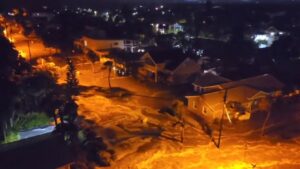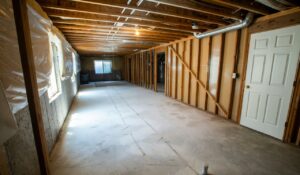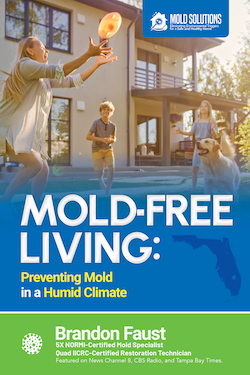Most but not all modern homes that have mold problems tend to have them in the same places. That’s not always true in every case, but true for most.
Common Mold Hotspots to Inspect
Based on our experience in treating mold for more than 6 years and in more than 3,000 homes across Tampa Bay, here are 10 places to look for mold prior to buying a new home.
But first, what should you even look for in these areas?
- Water stains
- Warped walls, bulging or buckling of trim, window sills, baseboards.
- Strange smells, musty, mildewy odors. Often compared to the smell of wet socks.
- Fresh or recent paint might cover these up, so some of this inspection requires you assume your seller is acting in good faith. If red flags start to mount up in your mind, seek a second opinion or ask for professional mold testing prior to buying. That’s not uncommon, but in a tight market can be a deal-breaker.
Where to look:
- Kitchen and Bathroom Sinks: Inspect under sinks for any mold growth or water leaks.
- Attic: Look at the trusses and roof sheathing for signs of water damage or mold.
- Ceilings: Search for musty smells, condensation, water stains, or recent paint that may indicate mold.
- Basement: Check corners, ceiling tiles, and joists for mold, which may look like dirt, and note any water stains on walls.
- Crawl Spaces: Look for high humidity, condensation, and use dehumidifiers to manage moisture if necessary.
- Windows: Ensure they seal correctly, check for condensation and inspect the sill for signs of mold or rot.
- Walls: Be aware of musty odors and stains that could suggest mold behind walls, and examine wallpaper for peeling or moisture.
- Closets and Wardrobes: Inspect dark and moist areas, especially corners and floors, for mold.
- Sliding Doors: Check the tracks for proper sealing and areas where water might collect.
- HVAC System: Inspect vents for dust, pollen, or signs of mold that can be spread by the air conditioning system.
What a Seller Has to Disclose to Buyer in Florida
In Florida, home sellers are required by law to disclose any known defects that materially affect the value of the property that are not readily observable and are not known to the buyer.
This reasonably includes information about mold or past water damage.
The seller’s disclosure should be made in good faith and should typically include these (with regard to mold and past water intrusion or damage):
- Mold: If the seller is aware of existing mold problems or conditions conducive to mold growth, they must disclose this to the potential buyer.
- Water Damage: Any known past water damage, flooding, or leaks that could have potentially led to mold or structural issues must be disclosed.
- Repairs and Treatments: If water damage or mold has occurred in the past and repairs or treatments were made, this information should also be disclosed, including the nature of the damage and the remediation steps taken.
The Florida Supreme Court established the Johnson v. Davis standard, which requires sellers to disclose known defects to buyers. It’s important for sellers to be transparent about the property’s condition to avoid legal disputes after a sale.
Sellers typically use a Seller’s Property Disclosure form to provide this information, although the law does not mandate a specific form. It is advisable for sellers to be as detailed and honest as possible in their disclosures to avoid future liability. Buyers should carefully review these disclosures and consider a professional home inspection to uncover any potential issues before closing on a property.










